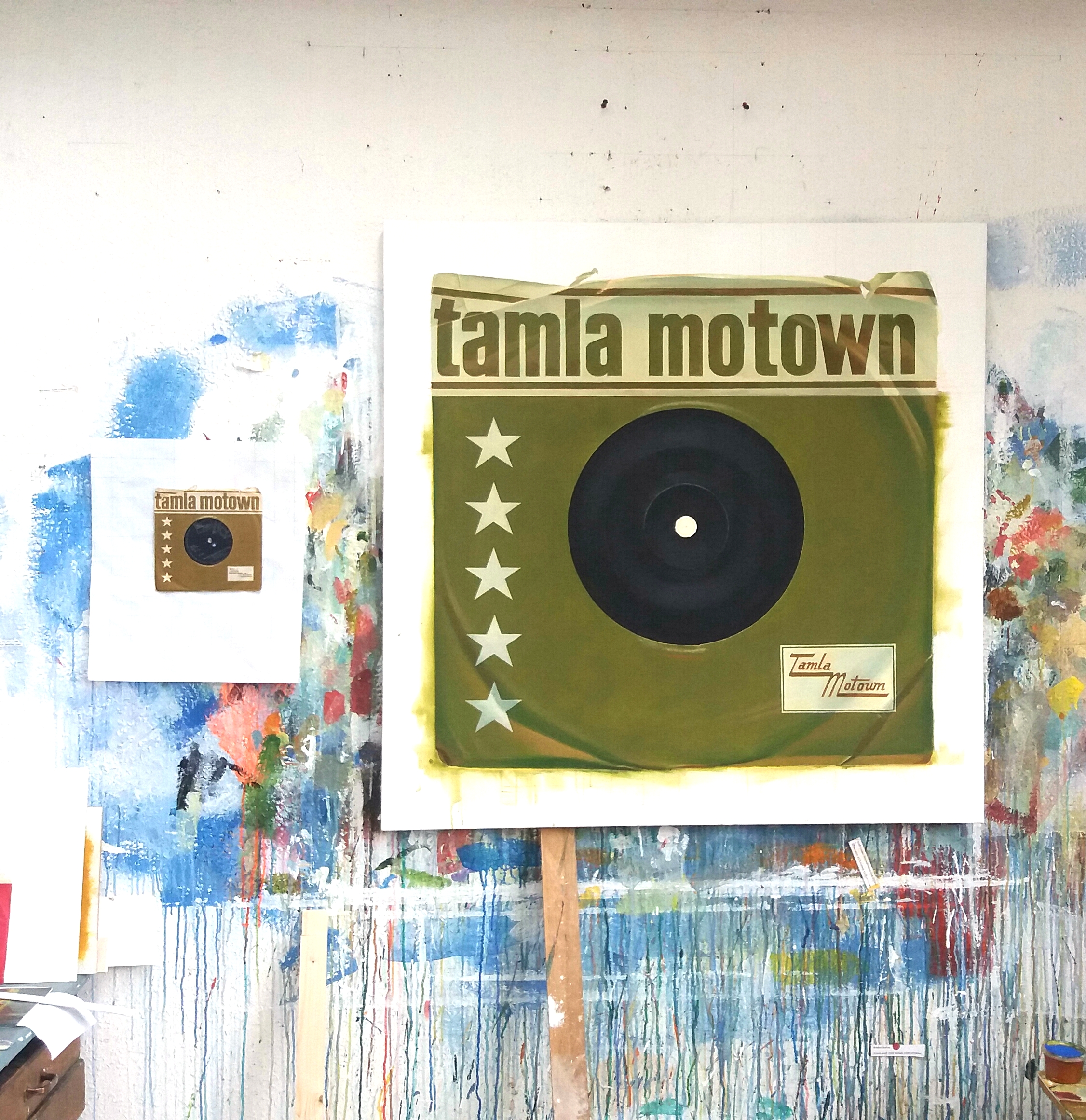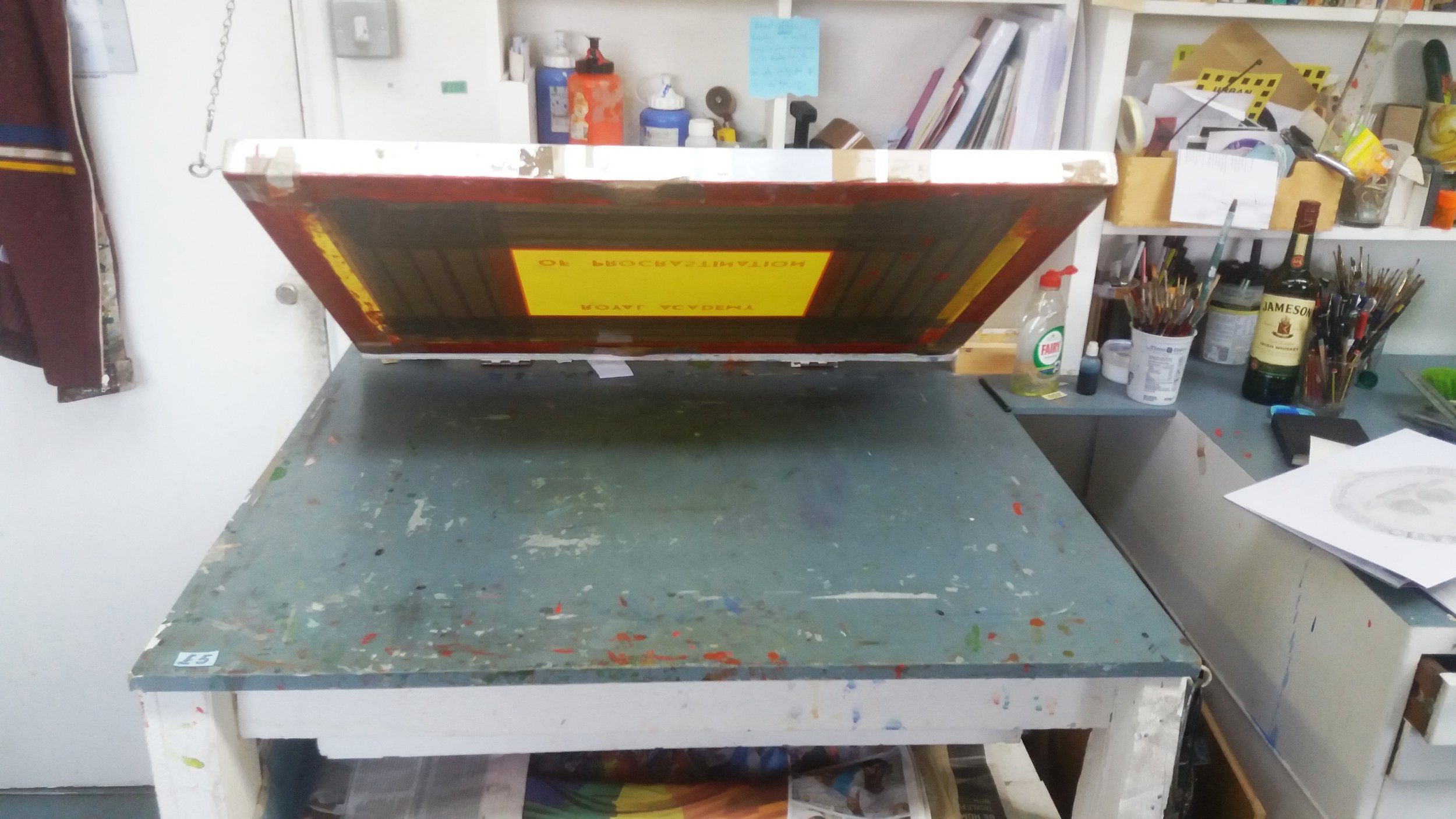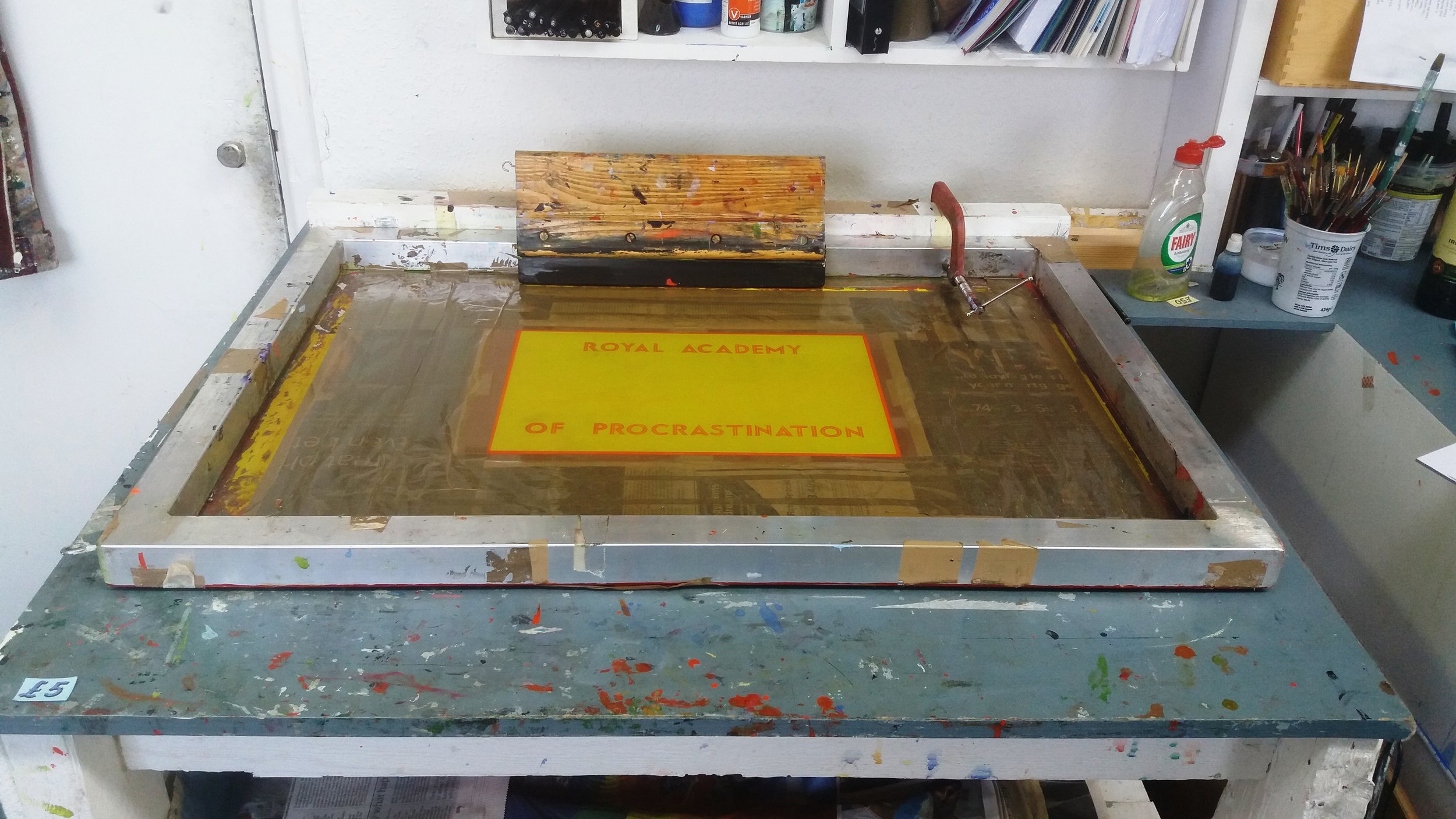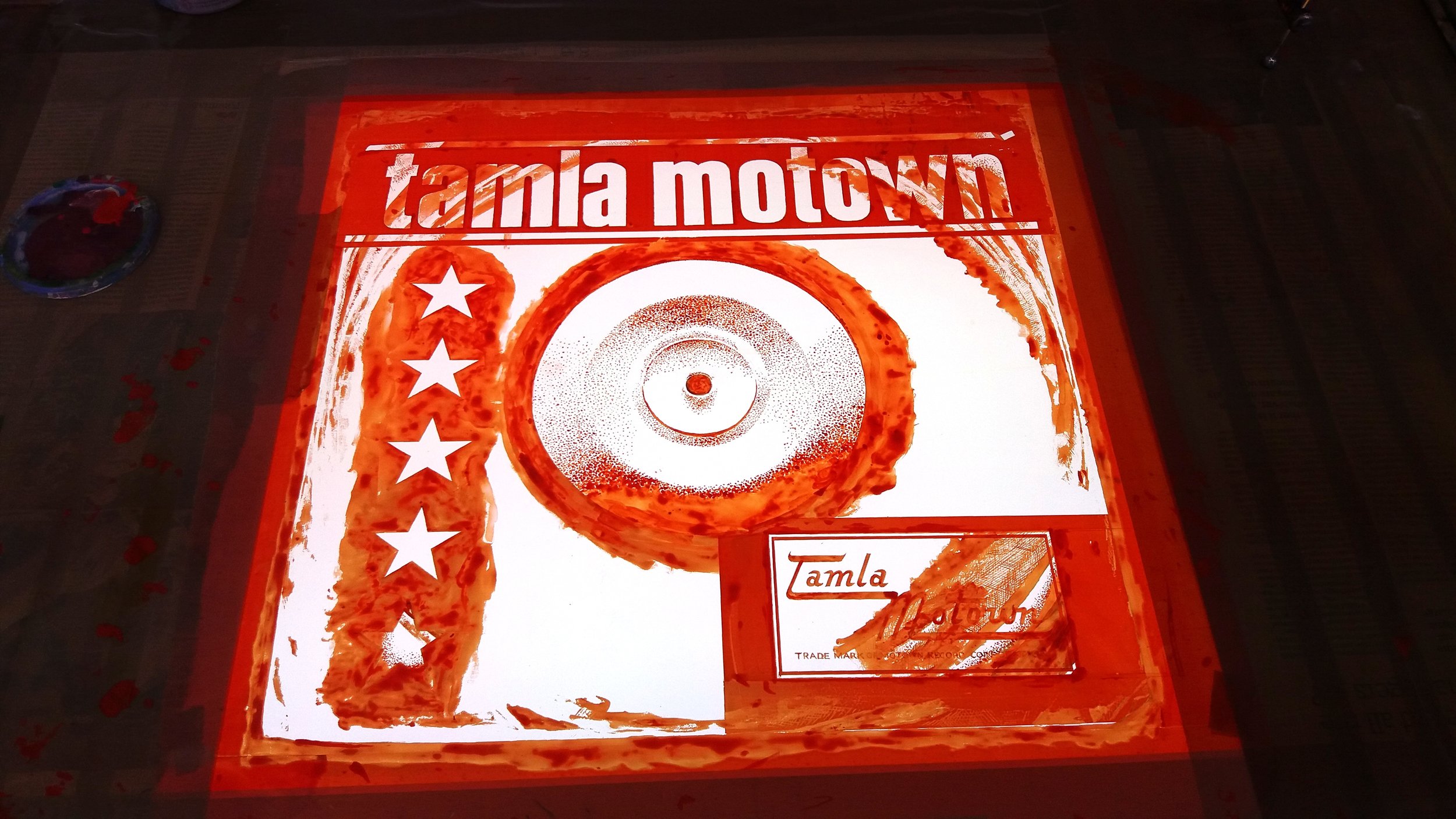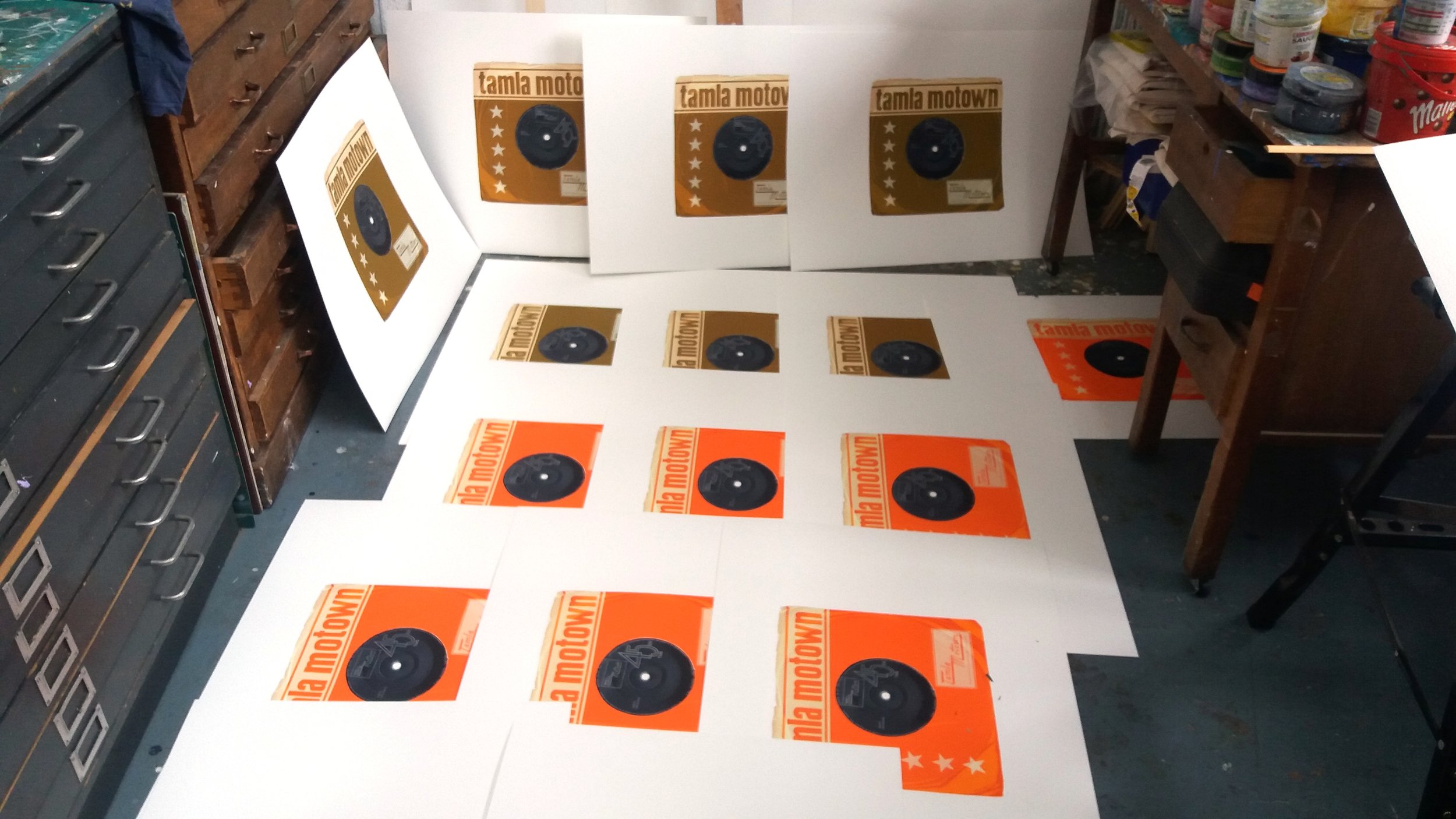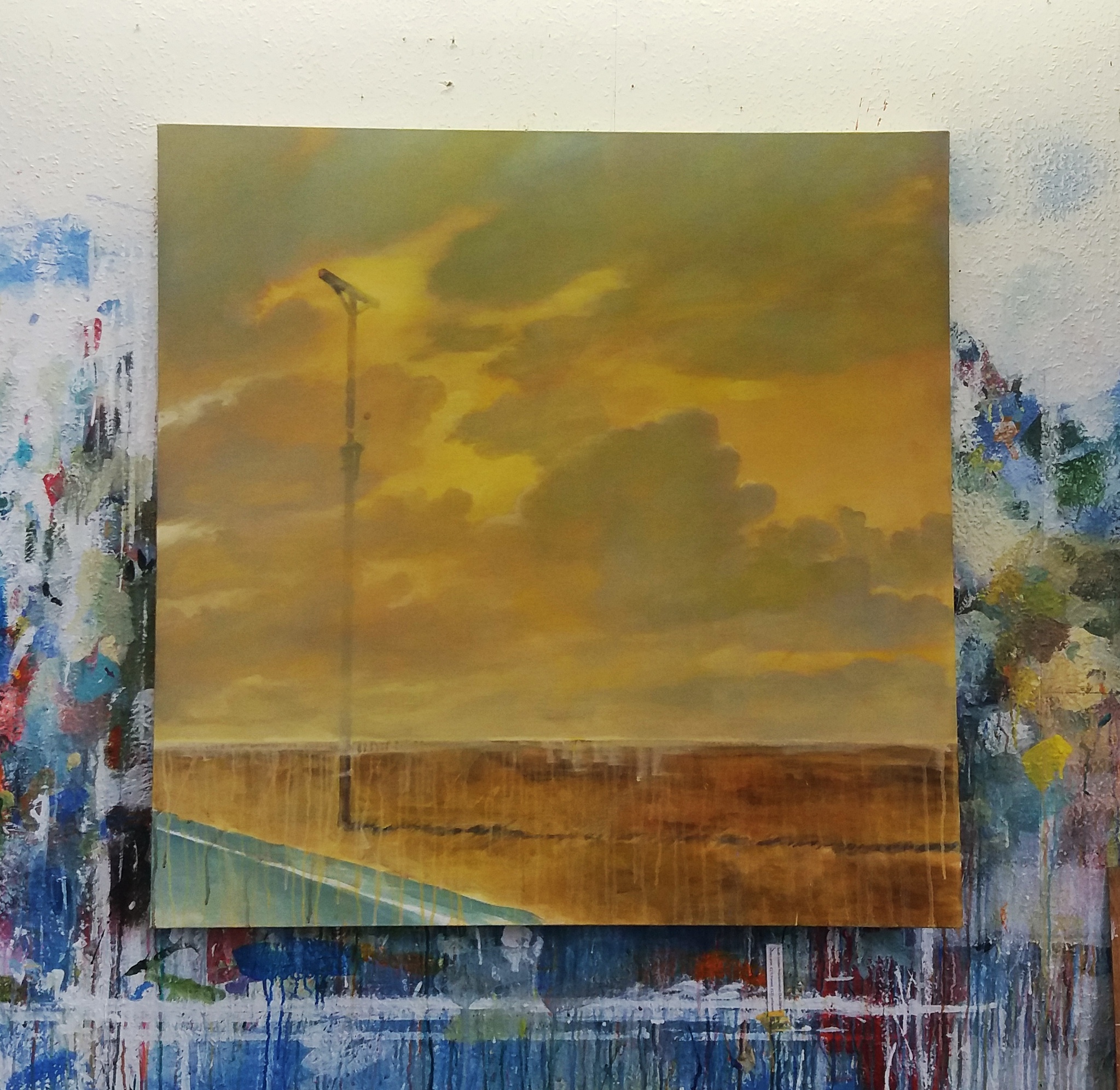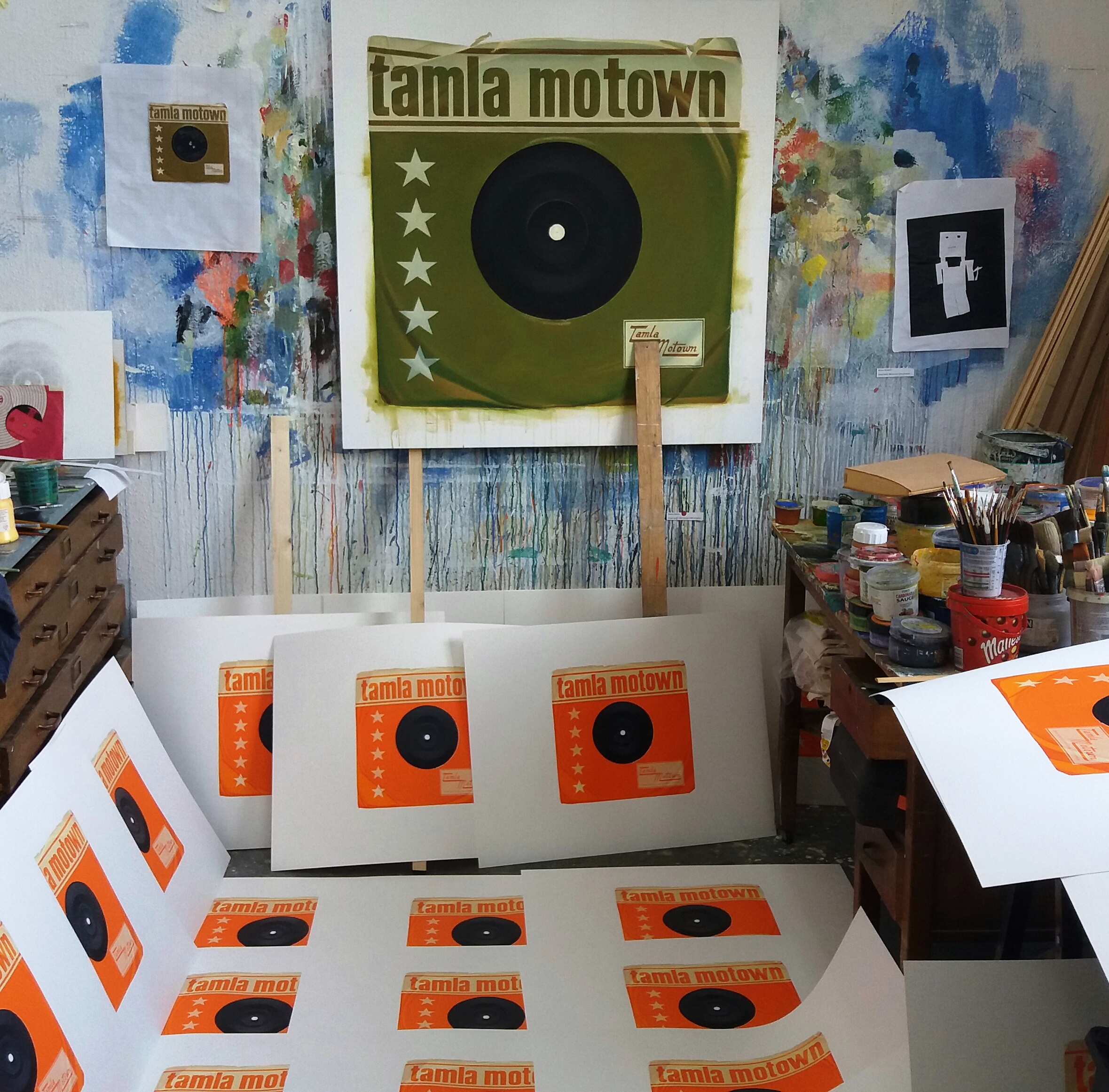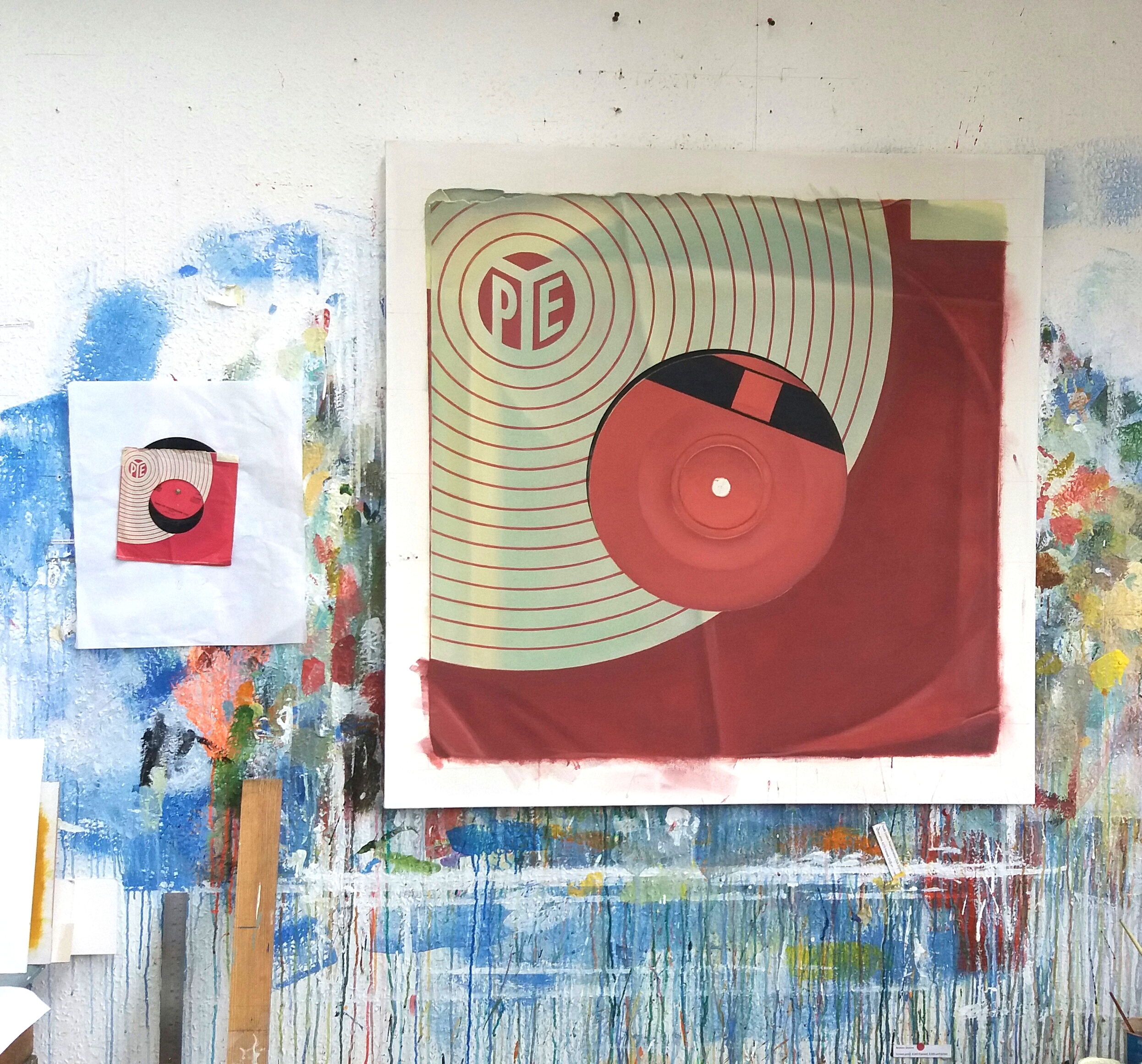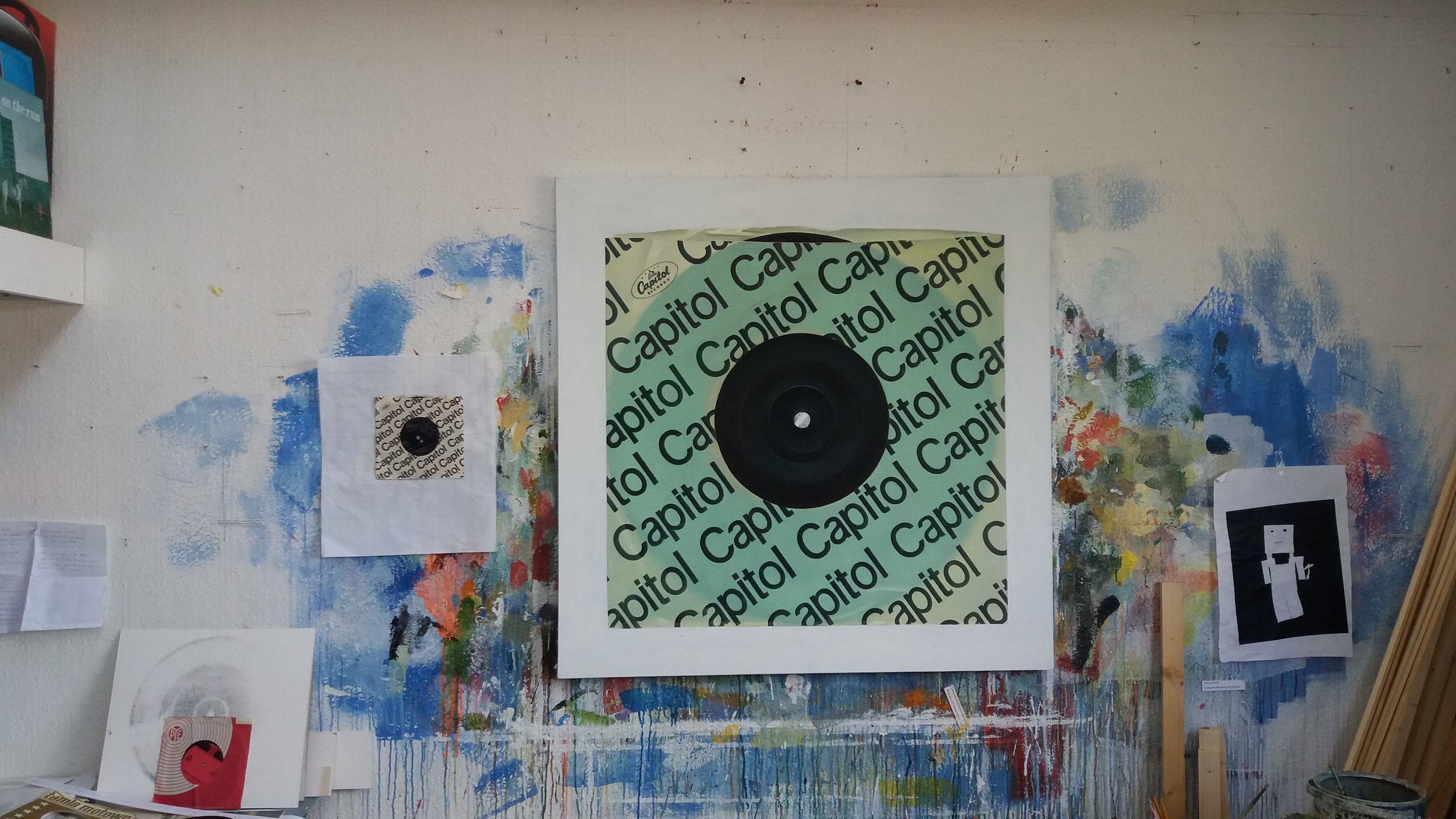All Martin's work is made at his studio in South London. Visitors are always welcome. To make an appointment please contact him.
Screenprints
Screenprint – also known as ‘silkscreen’ due to screens initially being made of silk – is most famed for the smooth, graphic shapes and flat colours it achieves. The medium, although dating back more than 900 years to the Song dynasty in China, rose to prominence during the Pop Art movement of the 1950 and 60s.
The technique is essentially a stencil print using a screen made from fabric stretched tightly over a frame.
Most contemporary screenprinters create their stencils by painting a light-sensitive polymer emulsion onto the screen, which is then exposed in an exposure unit, with their chosen image on top.
Martin, as an accomplished and inventive screen printer, eschews photographic and digital techniques and hand paints his stencils directly onto the screen. This is how he creates his unique screenprints.
Ink or paint is forced through the non-blocked areas of fabric mesh with a rubber blade – a squeegee – on to the paper below.
Screenprinting with Martin Grover
“I have no favourite: they’re two sides of the same coin, each feeding the other. I like the formality of the screenprinting process. You have to plan a bit more, there’s a beginning, a middle and an end. If it does or doesn’t work then you just start another print. The paintings, on the other hand, are often long, meandering and time consuming affairs: they have a beginning but the end is always elusive.”
Painting with Martin Grover
Paintings
Martin paints in acrylic on canvas. He builds the canvases himself to enable him to create specific sizes.
His record paintings, which he calls his 'Flat Still Lives', are painted from life. The landscapes and cityscapes are painted from observational drawings and his imagination.
His highly detailed style is time consuming, with larger paintings taking weeks or months to finish.


